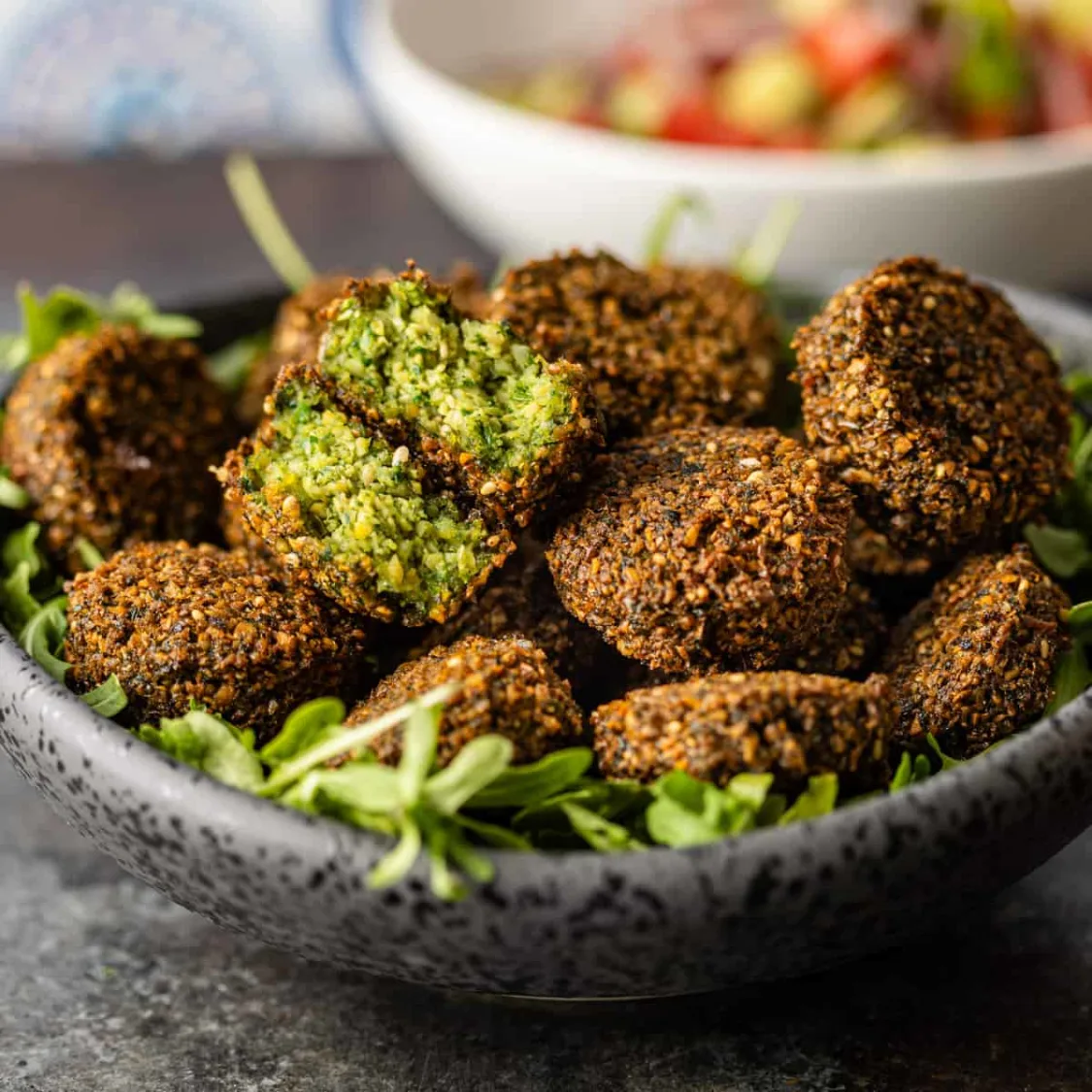
Ta'meya (Egyptian Falafel)
Egyptian-style falafel made with fava beans instead of chickpeas.
Ingredients
- •Fava beans
- •Herbs
- •Onions
- •Garlic
- •Spices
- •Oil for frying
Instructions
Soak beans
Soak fava beans overnight
Grind
Grind beans with herbs and spices
Form
Shape mixture into patties
Fry
Deep fry until golden brown
Ta'meya, Egypt's unique take on falafel, stands out from its Middle Eastern cousins by using fava beans instead of chickpeas as its base ingredient. This distinctive choice gives Egyptian falafel its characteristic bright green interior and incredibly rich, complex flavor that has made it a beloved street food and household staple across the country.
While the exact origins of Ta'meya are debated, many food historians believe it originated in Egypt's Coptic Christian community as a meat-free option during religious fasting periods. The dish has since transcended its origins to become a universal breakfast and snack food enjoyed by Egyptians of all backgrounds.
The preparation of Ta'meya begins with dried fava beans, soaked overnight until tender. These are then ground with fresh herbs like parsley, cilantro, and dill, which give the mixture its vibrant green color. Aromatics like garlic, onions, and traditional Egyptian spices including cumin and coriander are added to create a fragrant paste. This mixture is then shaped into small patties or balls and deep-fried until golden brown and crispy on the outside while remaining tender inside.
While the traditional recipe remains the most popular, modern variations have emerged. Some cooks add chickpeas to the fava beans for a different texture, while others incorporate additional herbs or spices. Some contemporary versions include colorful additions like sesame seeds on the exterior or even stuff the patties with cheese or hot peppers for an extra surprise.
In Egypt, Ta'meya is typically served in several ways. The most common is stuffed inside baladi bread with tahini sauce, fresh vegetables, and pickles to make a hearty sandwich. It's also often served as part of a breakfast spread alongside foul medames (stewed fava beans), eggs, and various salads. Street vendors typically serve them piping hot, straight from the fryer, with a stack of bread and condiments for customers to assemble their own sandwiches.
From a nutritional standpoint, Ta'meya is a excellent source of plant-based protein and fiber, making it a popular choice for vegetarians and vegans. However, being deep-fried, it can be high in calories and fat - a typical serving of 3-4 pieces contains about 200-300 calories. Those with fava bean allergies (favism) should avoid Ta'meya, as it could trigger severe reactions. For a healthier option, some people choose to bake rather than fry them, though traditionalists might argue this compromises the authentic taste and texture.
